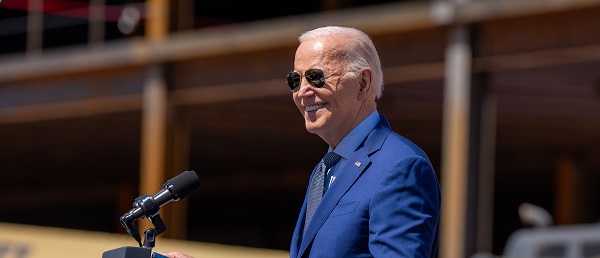Entertainment
Randi Boulton lights up Fionn MacCool’s on Sept 23rd

As mentioned, on September 23rd, local favourite Randi Boulton performs. Here’s what she says about herself:
I’m a Canadian singer/songwriter/musician whose roots run deep in Alberta. I was raised on a farm outside of Big Valley but live in Red Deer, Alberta, Canada. Music has always been a passion of mine despite having no music program at the school I attended. Besides childhood piano lessons and a couple of guitar/vocal lessons, I play by ear and basically, self-taught. I know that a good song is much more than theory and prefer to sing with pure, raw emotion. Singing is something that I’ve been doing for as long as I can remember. Often I found myself alone with my piano and guitar playing melodic sounds with a flood of thoughts running through my mind, turning into a song and putting me in a place of peace and solitude. Writing was never intentional but I always felt it came naturally. It all started when I won first prize in a talent show with my mom when I was 12. Then winning a song writing contest for Chinooks Edge School Division when I was 14. It was my first performance in front of 587 people on a grand piano playing a piece that had “won” or been recognized for something.
There are a number of Randi’s videos on the internet so take a look. In the meantime, we really like this one because it so nicely shows off her voice and her songwriting abilities.
Be sure to remember us for Happy Hour! Monday to Friday, enjoy the following drink specials from 3pm to 6pm…
Beer Sleeves 14oz – $4.95
Pints 20oz – $6.50
Tankards 23oz – $8.00
5oz house red or white wine $4.95
8oz house red or white wine $7.95
*4 for $12 shots all day long ! 1oz
We are open during the following hours:
Monday: 11am – 12am
Tuesday: 11am – 12am
Wednesday: 11am – 12am
Thursday: 11am – 1am
Friday: 11am – 2am
Saturday: 11am – 2am
Sunday: 11am – 12
CLICK HERE for more about the fabulous Fionn MacCool’s!
Business
Disney cancels series four years into development, as it moves away from DEI agenda

 MxM News
MxM News
Quick Hit:
Disney’s decision to cancel its planned ‘Tiana’ streaming series follows the entertainment giant’s move away from diversity, equity, and inclusion (DEI) policies. The company, once deeply committed to political activism, is now struggling to recover from years of financially disastrous content choices.
Key Details:
-
Disney announced the end of DEI-based management decisions and the winding down of its “Reimagining Tomorrow” initiative earlier this year.
-
The Hollywood Reporter revealed that the cancellation of ‘Tiana’ was part of Disney’s broader retreat from “original longform content for streaming.”
-
Analyst Ian Miller notes that Disney’s prior focus on political messaging rather than quality content led to repeated box office failures.
Diving Deeper:
Disney has spent the past several years prioritizing political activism over storytelling, leading to a sharp decline in the company’s financial performance and audience engagement. According to Ian Miller of OutKick, “Disney assumed that any content that represented ‘diverse’ audiences or featured ‘diverse’ characters would be successful.” That assumption, he argues, proved costly.
The decision to cancel ‘Tiana’ comes at a time when Disney is reeling from multiple box office disappointments, including the expected failure of ‘Snow White’ and the ongoing struggles of both Marvel and Lucasfilm properties. Miller highlights the alarming trend, stating, “Marvel’s ‘Captain America: Brave New World’ may actually lose money, with a disastrous $342 million worldwide gross through the first three and a half weeks.”
The ‘Tiana’ series was first announced in December 2020, a time when Disney was fully embracing its progressive agenda. The Hollywood Reporter noted that the show struggled to find its creative direction despite being in development for over four years. Miller suggests that, in the past, Disney would have continued with such a project regardless of its quality, out of fear of backlash from the left. “Under its prior operating mandate, Disney would have pushed forward anyway, believing that canceling a show based on a black character would be unacceptable to left-wing critics,” Miller writes.
However, the company’s recent shift suggests an overdue recognition that audiences ultimately demand quality over ideology. As Miller points out, “Parents want to take their kids to the movies, or give them family-friendly content to watch at home when they need a distraction. For decades, that meant Disney. Until the company prioritized targeting demographics instead of quality.”
While Disney appears to be learning from its missteps, the road to recovery will be long. As Miller emphasizes, the key to regaining audience trust isn’t to abandon diverse characters but to “get it right instead of doing it to check a box.”
Arts
Trump’s Hollywood envoys take on Tinseltown’s liberal monopoly

Quick Hit:
President Trump has appointed Jon Voight, Sylvester Stallone, and Mel Gibson as “special envoys” to Hollywood, aiming to restore a “Golden Age” and challenge the industry’s entrenched liberal bias. According to RealClearPolitics’ Ethan Watson, the move highlights the necessity of reclaiming cultural institutions from leftist control.
Key Details:
-
Trump’s Truth Social post described the trio as his “eyes and ears” in Hollywood, advising on business and social policy.
-
Hollywood’s leftist dominance, as seen in Disney’s political agenda and the cancellation of Gina Carano, has alienated conservatives.
-
Watson argues that Trump understands “politics is downstream from culture” and that influencing Hollywood is vital to shaping American values.
Diving Deeper:
President Trump’s latest move to reshape Hollywood has the entertainment industry buzzing. By appointing Jon Voight, Sylvester Stallone, and Mel Gibson as his “special envoys” to Tinseltown, Trump is signaling that conservatives no longer need to cede cultural institutions to the left. As RealClearPolitics’ Ethan Watson writes, “Donald Trump understands something many right-wingers haven’t for a long time: It’s time to take back institutions.”
Trump, who has long criticized Hollywood’s liberal slant, sees the entertainment industry as a battleground for shaping public opinion. “Although studies have shown that many Americans, particularly younger people, are unaware of the biggest news story of the day, nearly all of them consume media produced by Hollywood,” Watson notes. This cultural dominance, Watson argues, has been exploited to push a left-wing agenda, alienating conservative voices.
The case of Gina Carano exemplifies Hollywood’s intolerance toward dissent, Watson writes. The former “Mandalorian” star was fired by Disney in 2021 after posting a historical comparison on social media. “In truth, her cancellation was most likely due to her mocking pronoun virtue signaling and COVID-19 precautions that were essentially an entrance fee into the upper echelons of Hollywood,” Watson states. The politicization of entertainment didn’t stop there—Disney executive Latoya Raveneau openly admitted to inserting a “not-at-all-secret gay agenda” into children’s programming.
Watson pushes back against the idea that conservatives should simply “build their own” Hollywood, arguing that the industry is too integral to American culture to be abandoned. “Casting it aside would be like trying to create an alternative to Mount Rushmore or baseball – it’s irreplaceable,” he writes. Trump’s decision to highlight conservative-friendly stars like Stallone, Voight, and Gibson sends a powerful message: conservatives in Hollywood no longer have to stay silent.
Trump’s envoys are a step toward restoring balance in an industry that has become a one-party echo chamber. “Hollywood, along with social media, has become the ‘town square,’ the medium by which Americans share ideas,” Watson explains. With leftist cancel culture stifling dissent, Trump’s initiative is not just about entertainment—it’s about ensuring freedom of expression in America’s most influential industry.
-

 2025 Federal Election2 days ago
2025 Federal Election2 days agoPoilievre, Conservatives receive election endorsement from large Canadian trade union
-

 2025 Federal Election2 days ago
2025 Federal Election2 days agoRCMP Confirms It Is ‘Looking Into’ Alleged Foreign Threat Following Liberal Candidate Paul Chiang Comments
-

 2025 Federal Election2 days ago
2025 Federal Election2 days agoLondon-Based Human Rights Group Urges RCMP to Investigate Liberal MP for Possible Counselling of Kidnapping
-

 2025 Federal Election24 hours ago
2025 Federal Election24 hours agoMark Carney refuses to clarify 2022 remarks accusing the Freedom Convoy of ‘sedition’
-

 Business2 days ago
Business2 days agoBiden’s Greenhouse Gas ‘Greendoggle’ Slush Fund Is Unraveling
-

 2025 Federal Election1 day ago
2025 Federal Election1 day agoPM Carney’s Candidate Paul Chiang Steps Down After RCMP Confirms Probe Into “Bounty” Comments
-

 Censorship Industrial Complex2 days ago
Censorship Industrial Complex2 days agoFrance condemned for barring populist leader Marine Le Pen from 2027 election
-

 2025 Federal Election1 day ago
2025 Federal Election1 day agoLiberal MP Paul Chiang Resigns Without Naming the Real Threat—The CCP





